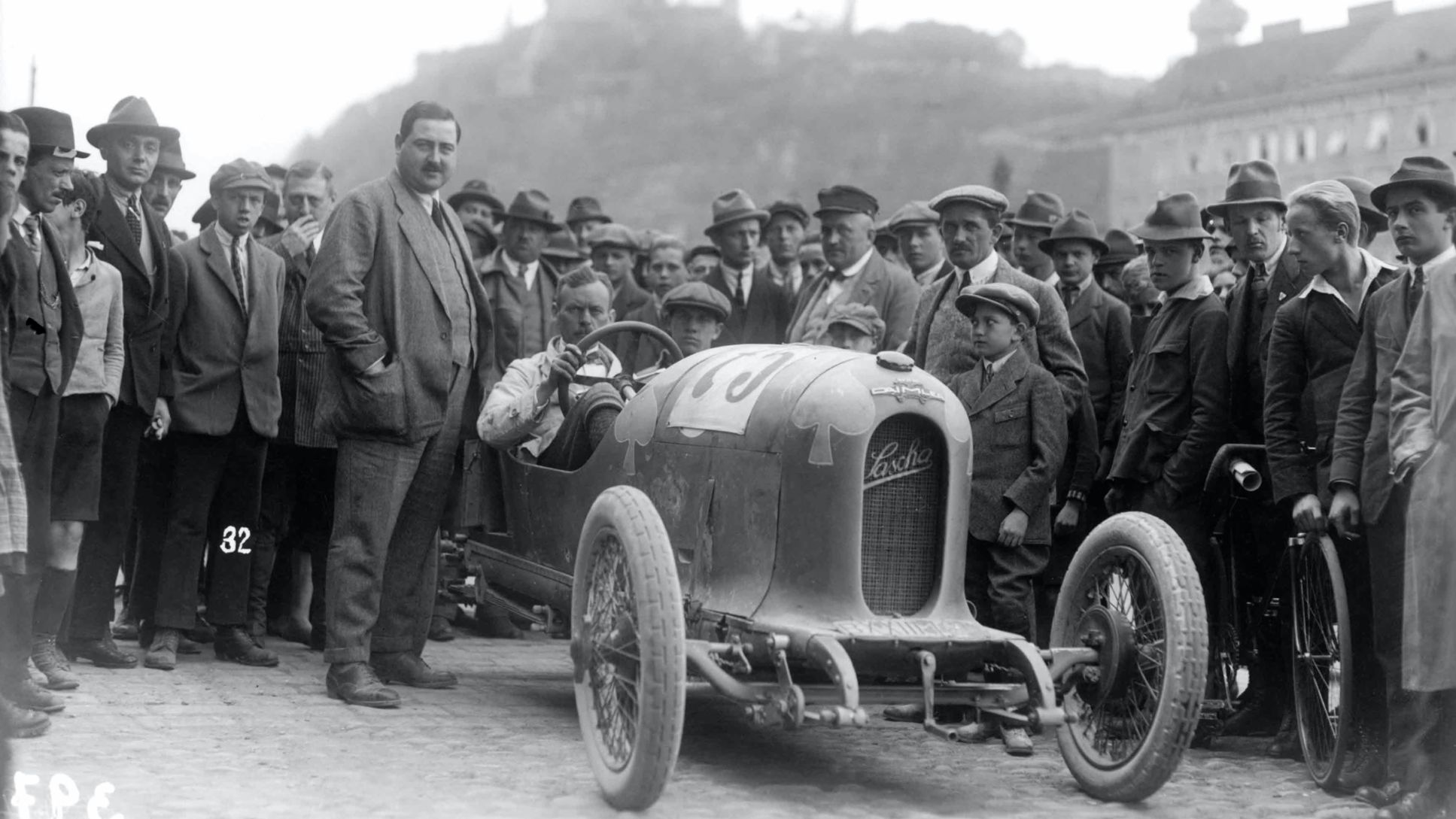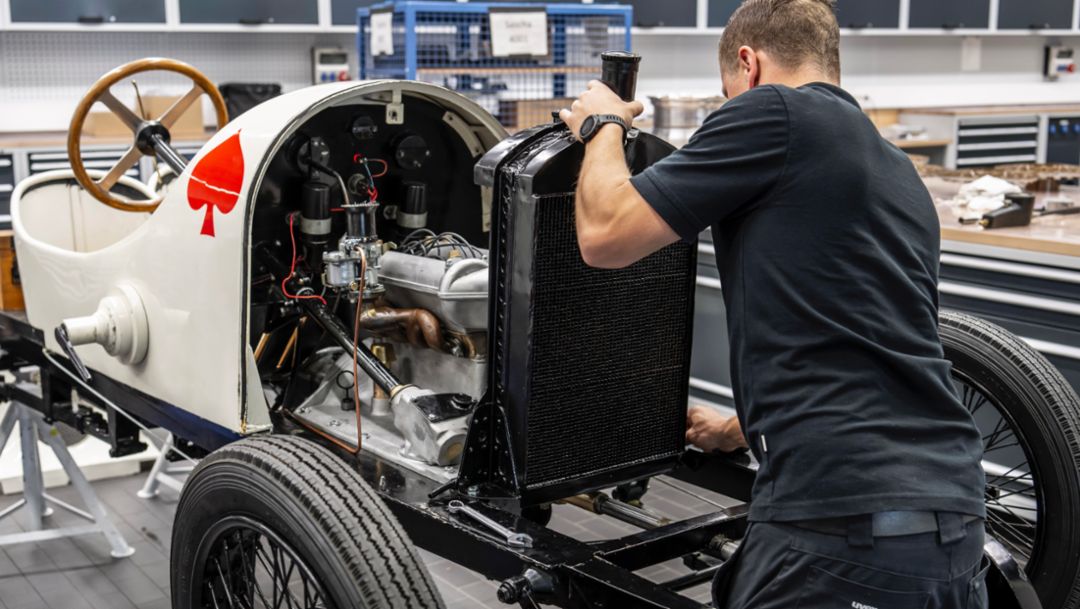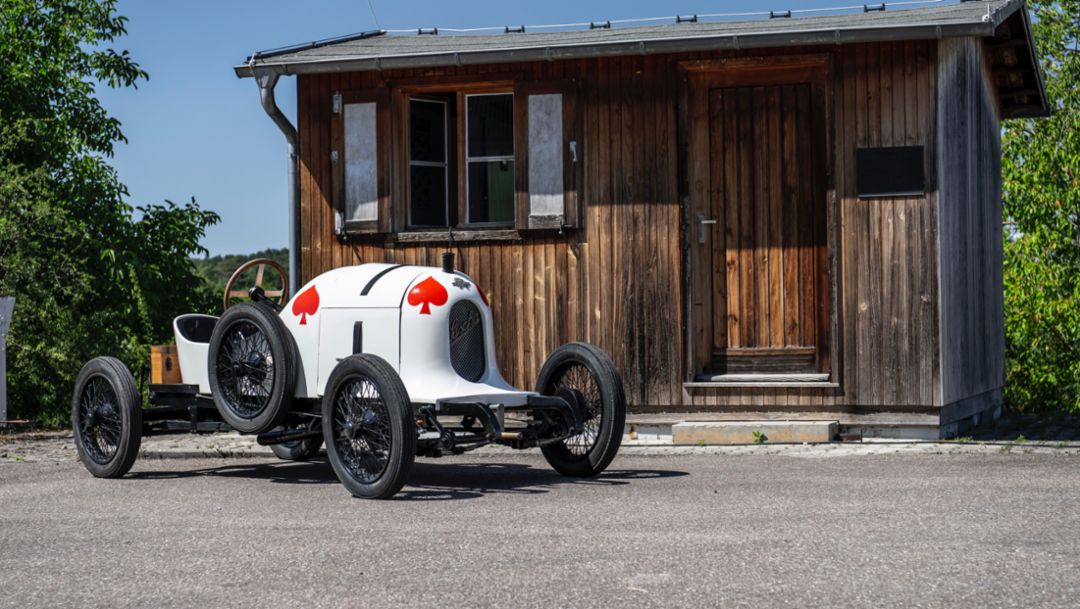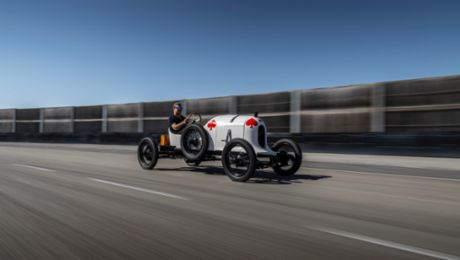Ferdinand Porsche first met Count Alexander Joseph von Kolowrat-Krakowsky in 1921. The keen motorsport fan was a partner in Austro-Daimler, the company where Porsche worked at the time. His nickname was Sascha. Porsche and Kolowrat talked about bringing a shared vision to fruition: a small car built in large quantities at a low price. Porsche needed the approval of the executive board at Austro-Daimler for the car but the board was sceptical. However, Porsche was convinced that positive publicity after a successful race would win over his critics. In addition to the production version of his small car with its engine of only 1100 cc, he also built a racing version: the ADS R. As it was financed by industrial tycoon and film producer Kolowrat, the car was named after him: Sascha. The result was a lightweight, two-seat, racing version of the planned series four-seater weighing just 598 kg.
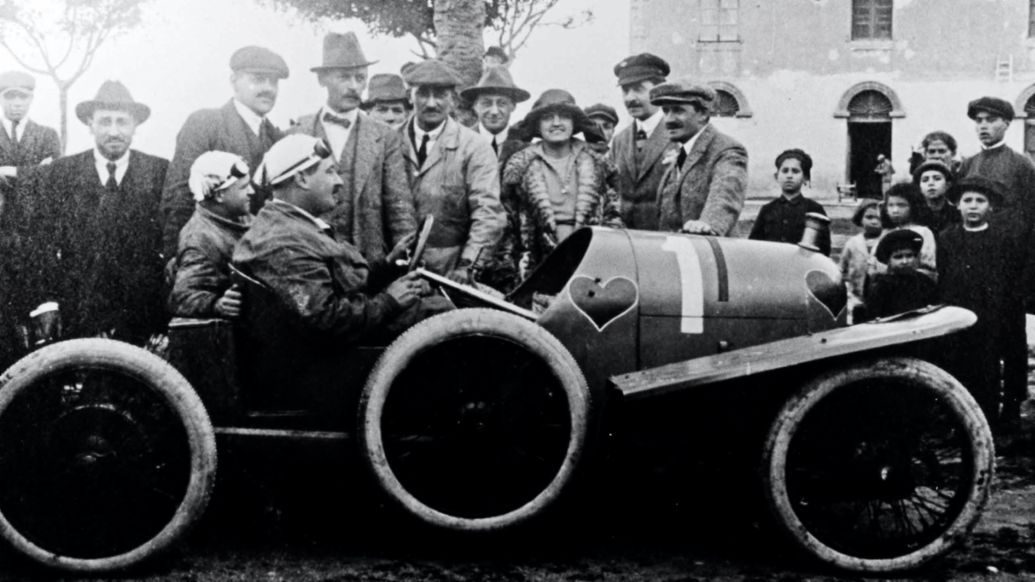
Its water-cooled, 1.1-litre, in-line, four-cylinder engine had two overhead camshafts and was set well back in the chassis. This helped to give a weight distribution of 53 per cent front and 47 per cent rear, and with two full petrol tanks and two seats occupied, the load was perfectly distributed. The second bucket seat was reserved for the mechanic, which was not unusual at the time. The mechanic stowed spare parts and tools in a wooden crate behind the seats, and spare wheels were secured at the sides.
Longstanding tradition: Porsche tests developments in motorsport
Although he left Austro-Daimler over disagreements, Ferdinand Porsche’s 17 successful years there proved to be a springboard and he joined Daimler in Stuttgart at the end of April 1923. While working on the small car project he’d met the men who would later be his first employees: Otto Zadnik and Karl Rabe. The latter would be his successor at Austro-Daimler.
A few years later in 1931, together with his son-in-law Anton Piëch and the former racing driver and businessman Adolf Rosenberger, Porsche founded the engineering office ’Dr. Ing. h.c. F. Porsche GmbH, Konstruktionen und Beratung für Motoren und Fahrzeuge’. Porsche would go on to maintain the custom of testing developments in motorsport before they went into series production. And the company would continue to attach special importance to the Targa Florio.
“Strange race over hair-raising routes”
The four ADS R prototypes were only finished shortly before the race in 1922. It was only on the train that they painted the aluminium bodies of the Sascha cars red so they wouldn’t stand out so much and be stolen in Italy. To help tell them apart from a distance, Kolowrat had them adorned with symbols from playing cards.
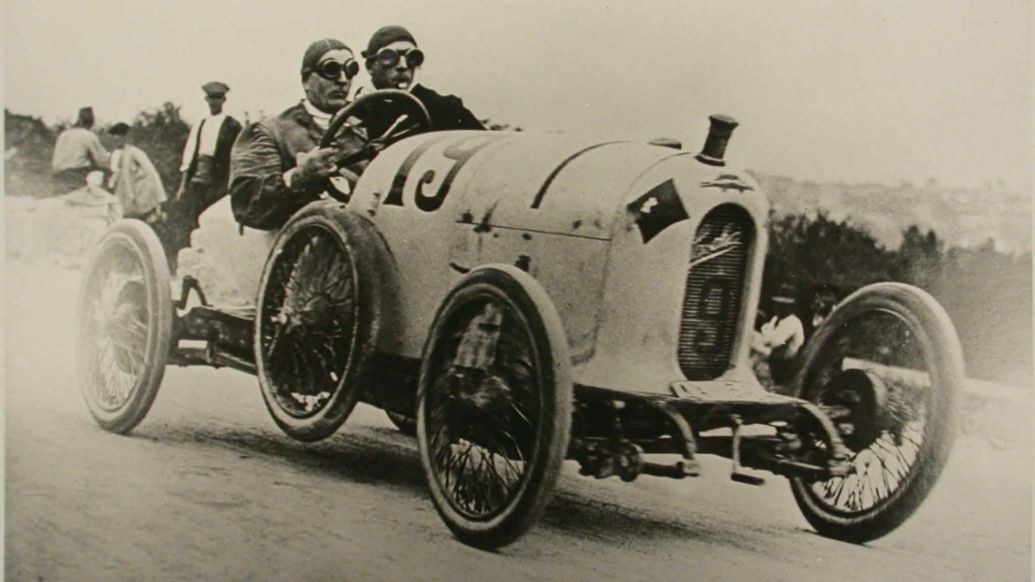
His model was bedecked in hearts, while Alfred Neubauer – the most successful driver and later the racing director of Mercedes – got diamonds, Fritz Kuhn drove with spades and Lambert Pöcher with clubs. Count Kolowrat not only financed and directed the operation, but also drove too, entering the small sports cars in the 1.1-litre class, which set off first. Later, the four Sascha drivers would call the Targa Florio a “strange race over hair-raising routes”. The cars left at two-minute intervals, which meant that the participants never saw who they were competing against.
The aim was to complete four laps of 108 kilometres each. At the end – after 432 km, 6,000 turns and gradients of up to 12.5 per cent – the leading Austro-Daimler ADS R finished 19th in the overall rankings. “Many strutted their stuff with big engines at the Targa Florio but the 598-kg Sascha was a nimble fellow with its 50 PS at 4500 rpm,” says Achim Stejskal, Director of Heritage and Porsche Museum. “At the end of the race, its average speed was just 8 km/h less than that of the fastest cars with engines four or five times more powerful.”
The Italian press hailed the fast and resilient “mini car” with a potential top speed of 144 km/h as “the revelation of the Targa Florio”. To spread the news beyond Italy’s borders, Ferdinand Porsche placed large adverts in newspapers: “Austro-Daimler is the moral victor of the 1922 Targa Florio!” It was a claim challenged just days later by Daimler, which placed large ads of its own; Daimler had, after all, taken overall victory. The members of the executive board of Austro-Daimler AG – headed by Camillo Castiglioni – had indeed taken note as Porsche had hoped but were still not prepared to approve series production of the ADS.
Further successes did not change their view. The agile and efficient Sascha followed up its class win in the Targa Florio with another 42 victories in 52 races – often with the young Ferry Porsche watching on. The board ultimately rejected the proposal once and for all, citing financial reasons, inflation and the fact that Austria was too small to offer a suitable market. They believed their focus should be on big, six-cylinder models instead. The board’s decision and a conflict with Castiglioni led Porsche to leave Austro-Daimler and move to the parent company in Stuttgart. In 1924, Ferdinand Porsche took part in the Targa Florio with Daimler and received, among other things, the honorary doctorate title – the title that still features in the company name today.
Porsche: the most successful entrant in the Targa Florio
What his father Ferdinand Porsche started a century ago as an employee of Austro-Daimler, Ferry Porsche continued with cars under the family’s own name, the Stuttgart sports car manufacturer becoming a regular competitor in Sicily. And with 11 overall victories, Porsche was the most successful participant in the Targa Florio of all time. In 1956, Umberto Maglioli scored Porsche’s first outright win in the 550 A Spyder. Maglioli’s victory evoked what the team led by Ferdinand Porsche and Count Kolowrat achieved a hundred years ago with the Austro-Daimler ADS R: besting a field of competitors with bigger engines.
